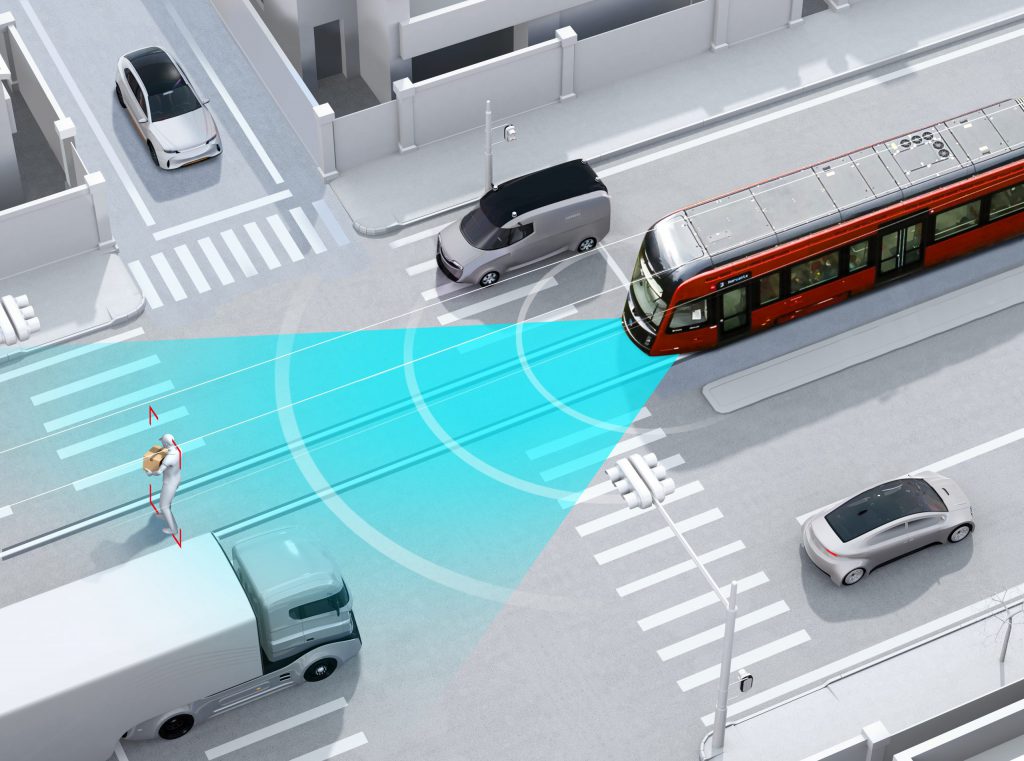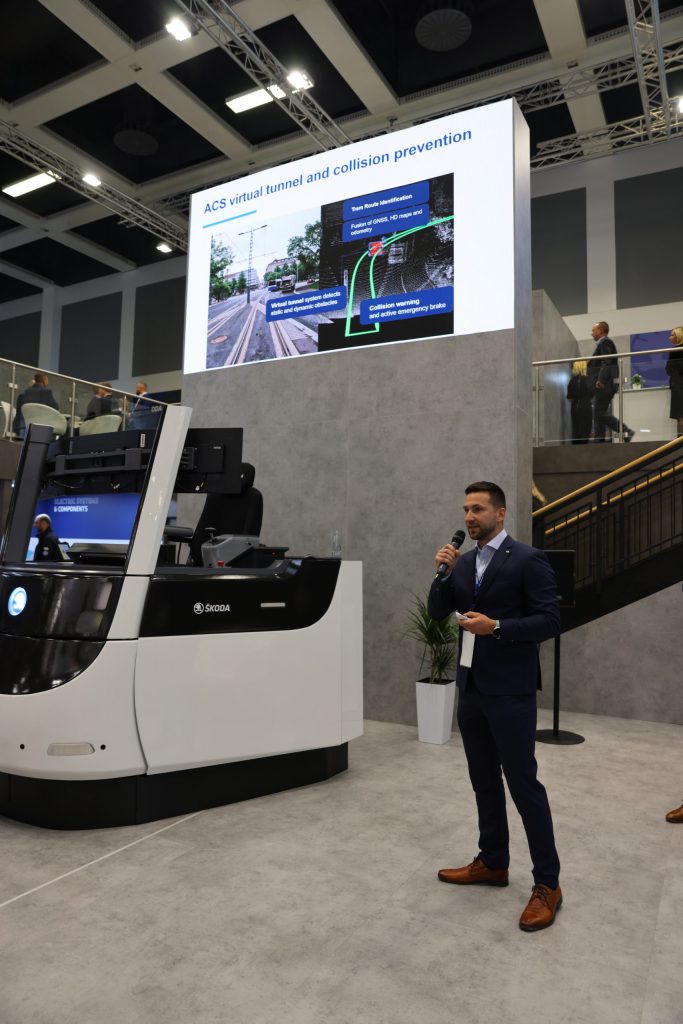Škoda Group’s new anti-collision system creates a virtual tunnel in front of the tram in which it detects all static and dynamic obstacles and, if it detects one, alerts the driver and activates the emergency brake. The entire environment is monitored by a sensor suite that includes LiDAR, an IMU unit and a camera. The LiDAR is responsible for 3D mapping of the environment within a range of 100 -150 m, in both horizontal and vertical field of view. The IMU unit sends vehicle tilt information to the system and therefore helps ensure that the output of the anti-collision system sensors is aligned to the track profile and thus helps to accurately locate the tram on the track. The camera provides high resolution 2D images to capture more details.
The anticollision system can be supplemented with other features to tailor it to the requirements of individual customers. One possibility is, for example, to adapt the driver alarm so that its sound depends on the severity of the impending collision, etc.
Škoda Group plans to launch the anti-collision system in 2023, but that is not the end of its story. Škoda is currently working with other companies within the PPF Group on the development of the first autonomous tram, which is expected to begin trial operation in a few years on the closed circuit in Pilsen. The development of the anti-collision system will thus continue towards the realisation of the tram of the future.





